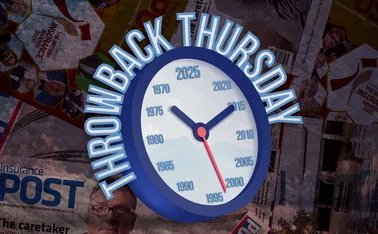
Post Europe: Italian disclosure regulation

New contract disclosure rules have been introduced in Italy late last year and as Paolo Golinucci explains this is having a knock on effect for brokers in the open market.
From the 1 December 2010 the Italian insurance authority imposed new rules on contract disclosure that necessitates the production of additional documents, an informative note and glossary, before the issuance of the policy.
The legislation from the Istituto la Vigilanza sulle Assicurazioni e di Interess Collettivo makes policies more transparent for consumers, which can only be a good thing, but produces a lot more work for the insurance broker, who is constricted to use a massive amount of paper and all to maintain his qualification as an independent intermediary from the insurance companies.
Reinforcing transparency
In the six months since the application of ‘Regulation n.35' there have been some major issues for brokers. The regulation implements the requirements of the Private Insurance Code giving act to the duties regarding the information and advertising of insurance products - on the transparency of insurance products and the protection of the insured in respect of the Informative Note (art.185), advertising of insurance products (art. 182 ) and the rules of conduct (art. 183), issued in September 2005. The aim is to reinforce the transparency and the clarity of the pre-contractual documents used when offering insurance policies.
One of the main new requirements is that of the obligation of the consignment of an informative booklet - Fascicolo Informativo - by intermediary, be that agent, broker, bank or post office, to the consumer, before the policy is underwritten and before the proposal form is filled in.
"The broker is constricted to use a massive amount of paper and all to maintain his qualification as an independent intermediary."
Contract contents
This document explains the contents of the contract clearly for the consumer and consists of the following three contractual and pre-contractual documents: the informative note, including a glossary of the insurance definitions; the full policy wording; and the proposal form, if applicable.
The informative note provides summary of information about the type of contract and the insurer, and a glossary to make it easier to read and understand the policy. Pre-established schemes must be followed to allow comparison between the different offers by the insurers.
Solvency information
Another new regulation has been introduced to provide, in the informative note, information about the financial ranking of the insurer called the solvency ratio: before signing a contract the consumer is informed about the insurer's capacity to meet its commitments through indication in the informative note of a specific index.
This new parameter, now revealed to the public, indicates how many times the company's solvency margin exceeds the minimum required by law to meet its commitments to its policyholders. The minimum requirement for solvency ratio is 1. All Italian insurers are over this - Assicurazioni Generali has 8.86 times the minimum solvency margin required by law, Milano Assicurazioni (Fonsai group) has the solvency ratio at 2.88, while Allenza-Toro is 2.39 and Allianz 2.33. Closer to the ratio are Axa at 1.84, Cattolica at 1.30, Groupama at 1.09, while UGF only manages 1.04. At the other end of the scale are Uniqa Insurance, which specialises in health insurance, at 37.7 and Lloyd's of London at 24.76.
"This new parameter indicates how many times the company's solvency margin exceeds the minimum required by law."
Aggravation issues
The inclusion of numerical examples to facilitate understanding of the coverage and to report the ‘warnings' to be evaluated carefully, as per the clauses that can cause aggravation to insured like the excess, exclusions and limitations, are fundamentally important in the completion of the informative note.
In regards to car insurance, a list of approved claims centres, including addresses, days and times to assist the insured in the event of an accident must be enclosed in the informative note. A full copy of policy wording and the proposal form are the documents that complete this booklet.
Pre-contractual obligations
Moving onto the proposal form, the regulation 35 brings with it some new obligations that create additional problems for the insurance broker. In Article 30 "documentation" of the "reporting requirements relating to insurance products damage", the information booklet says must be delivered before signing the proposal.
This becomes a problem for the insurance broker that normally collects different quotes and conditions by the insurers after the presentation of a proposal form signed by customer. It is, therefore, not possible to show the consumer the policy conditions of the best solution found for client before the signature of proposal form.
"It is not possible to show the consumer the policy conditions of the best solution found for client before the signature of proposal form."
Documentation overload
Taking this point into consideration it requires the broker to give the consumer an informative booklet before signing the proposal form for each offer acquired, for example, if the broker has three different quotations then he has to provide three different informative booklets for each insurer that provided him with a valid quotation.
The documentation must be submitted in paper format and considering an information booklet for professional liability insurance consists on average of 35 to 40 pages, then the retail broker for the consumer must print at least 110 pages before receiving the completed the proposal form, quoting the risk and preparing a comparison of the insurers offers for the consumer.
Independent attitude
This massive use of paper to be consigned in a pre-contractual phase is down to a regulation that does not distinguish between the role of a broker - which controls 14% of gross written premium in Italy - which must select the best offers for the consumer, and that of an insurance agent offering the policy of a single insurer.
The production of the informative booklet creates additional obligations for a broker working with insurers outside of Italy, for example, placing business in the ‘open market' at Lloyd's. Other than the cover note with the Lloyd's broker, now the insurers have to produce, with the support of Lloyd's broker or an Italian correspondent, an informative booklet specifically created for the policy, which has to be signed by underwriter.
"Initial signs are that although it may be of benefit to the consumer it is doing nothing to help brokers."
Durable downloading
The only alternatively to printing off the informative booklet is to ask the customer to sign to receive this document by email or on a durable support-downloading by internet - following the ISVAP Regulation n. 34, in force since 1 November 2010, on the distance marketing of insurance products: with the obligation of the written signature of the customer on the sales contract may be viewed as being contrary to certain provisions contained in the Italian Consumers' Code and various European Union directives.
It is only six months into this regulation but the initial signs are that although it may be of benefit to the consumer it is doing nothing to help brokers and the wider insurance market in Italy.
Paolo Golinucci is a broker at Golinucci
Only users who have a paid subscription or are part of a corporate subscription are able to print or copy content.
To access these options, along with all other subscription benefits, please contact info@postonline.co.uk or view our subscription options here: https://subscriptions.postonline.co.uk/subscribe
You are currently unable to print this content. Please contact info@postonline.co.uk to find out more.
You are currently unable to copy this content. Please contact info@postonline.co.uk to find out more.
Copyright Infopro Digital Limited. All rights reserved.
As outlined in our terms and conditions, https://www.infopro-digital.com/terms-and-conditions/subscriptions/ (point 2.4), printing is limited to a single copy.
If you would like to purchase additional rights please email info@postonline.co.uk
Copyright Infopro Digital Limited. All rights reserved.
You may share this content using our article tools. As outlined in our terms and conditions, https://www.infopro-digital.com/terms-and-conditions/subscriptions/ (clause 2.4), an Authorised User may only make one copy of the materials for their own personal use. You must also comply with the restrictions in clause 2.5.
If you would like to purchase additional rights please email info@postonline.co.uk








